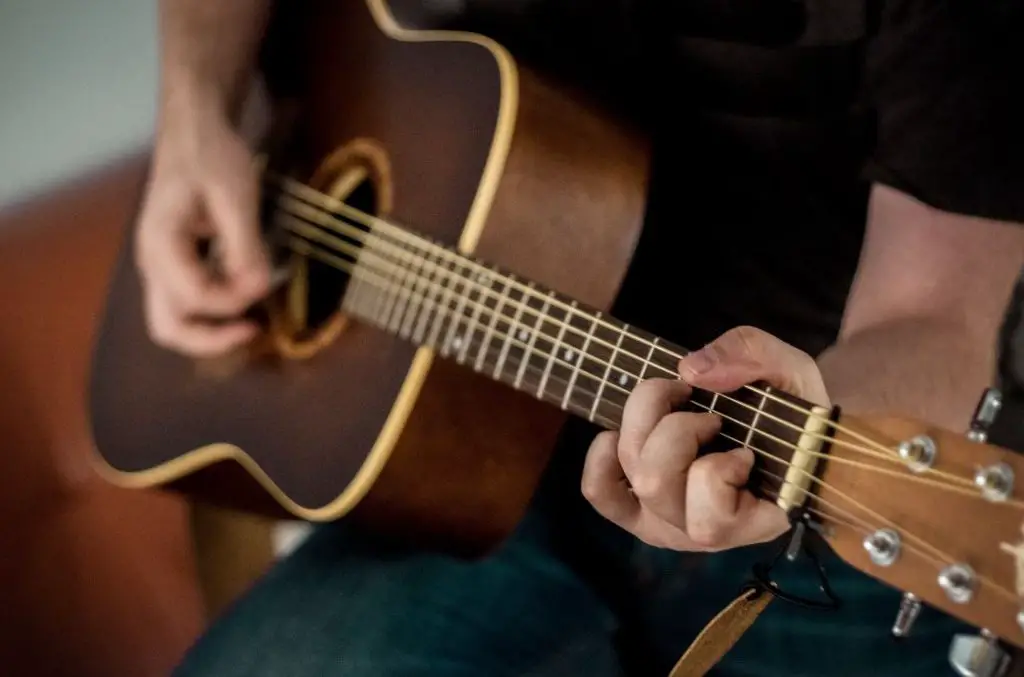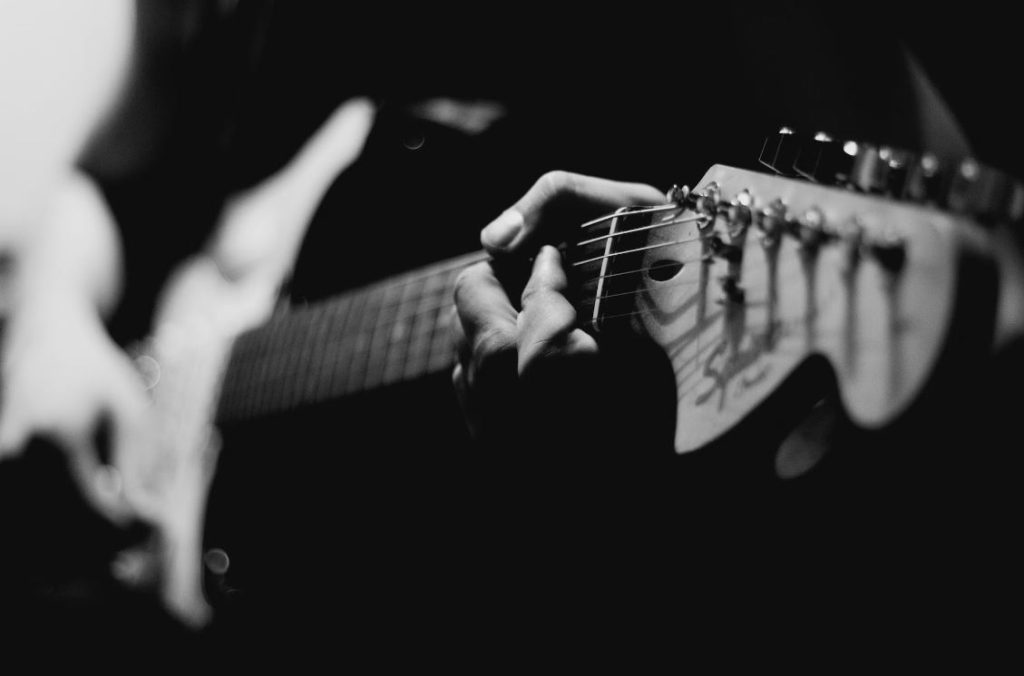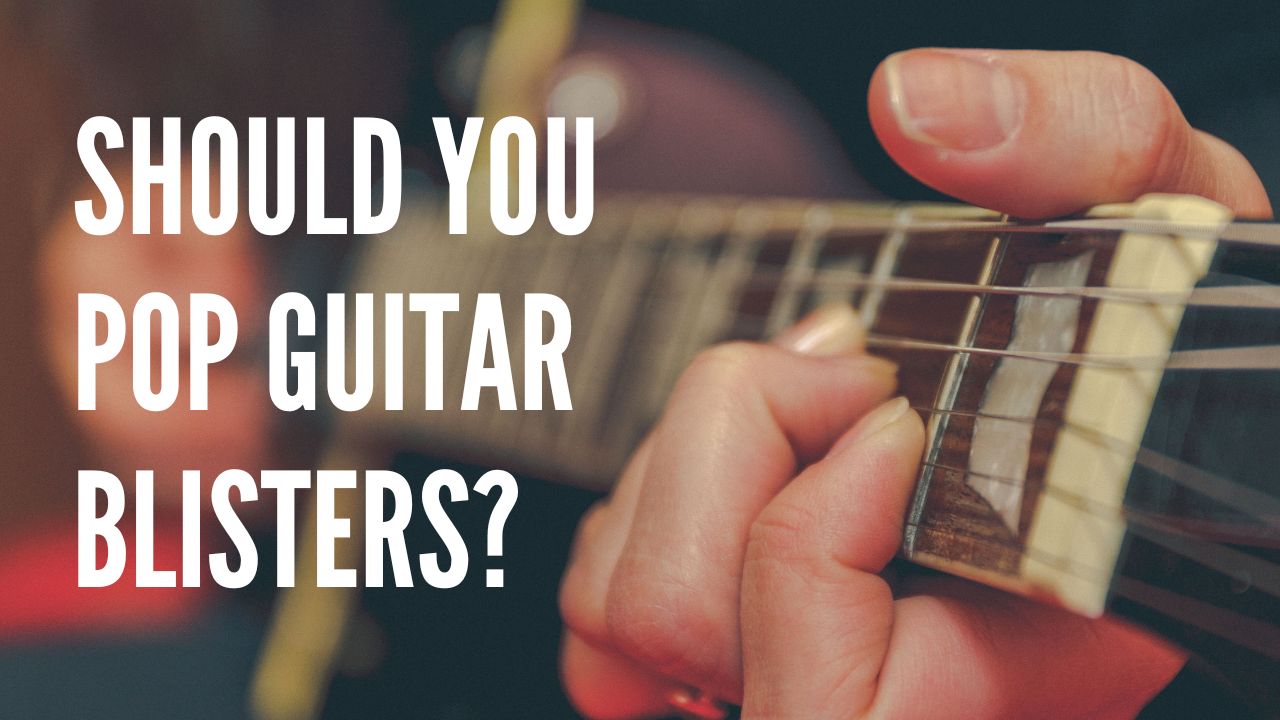This product list contains affiliate links. This means that at no extra cost to you, I may earn a commission if you use one of these links to make a purchase.
Last updated on October 1st, 2023 at 03:25 pm
One of the most common challenges you may face is dealing with blisters from playing the guitar. These painful, fluid-filled bumps can make it difficult to continue playing, leading to frustration and potential setbacks.
One question that frequently arises is whether or not you should pop guitar blisters. In this guide, I will explore the best practices for dealing with guitar blisters, including the pros and cons of popping them.
By the end, you’ll have a better understanding of how to manage and prevent guitar blisters so that you can focus on enjoying your music. Let’s dive in and see what options are available to you.
Key Takeaways
- 🎸 Guitar blisters are common for musicians and are usually caused by friction or repeated pressure. Proper guitar technique and regular application of moisturizer can help prevent them.
- 🚫 Popping guitar blisters offers immediate relief but has risks such as potential infection, skin damage, and delayed healing. It’s advised to only pop a blister when absolutely necessary and with extreme caution.
- 🧼 Cleanliness is key when managing guitar blisters. If you decide to pop a blister, it’s crucial to clean the area before and after, and cover it with a sterile bandage to avoid infection.
- 🌱 Alternative treatments like protective coverings, ice, aloe vera, and teat tree oil can be used to help heal and soothe blisters without popping them.
- 🩺 Seek professional help if blisters worsen, cause extreme pain, or show signs of infection. While most guitar blisters can be treated at home, severe cases may require medical intervention.
Guitar Blister Prevention

Avoid pressing down too hard on the strings or frets as this can create undue pressure on your fingers. You should also maintain proper finger positioning on the frets, keeping your fingers as straight as possible to avoid rubbing against the strings. Using lighter gauge strings can also be helpful in reducing pressure and friction.
Another critical aspect of guitar blister care is regularly applying moisturizer to your hands. This will help keep your skin soft and supple, reducing the chances of developing blisters. Finally, it’s essential to take frequent breaks when playing to allow your fingers and hands time to rest and recover.
| Guitar Blister Care Checklist | |
|---|---|
| Take a break from playing guitar to let a blister heal | ✔️ |
| Consider draining a blister only if it’s necessary and with caution | ✔️ |
| Use proper guitar technique to prevent blisters | ✔️ |
| Apply moisturizer regularly to keep skin soft and supple | ✔️ |
| Take frequent breaks when playing guitar | ✔️ |
By following these tips, you can avoid the pain and discomfort of guitar blisters altogether. However, if you do get blisters, it’s important to take steps to heal them quickly and avoid further irritation. In the next section, we’ll explore the pros and cons of popping guitar blisters and discuss some alternative approaches to treatment.
Also Read: Guitar Blister: Why It’s Not a Setback, But a Sign of Progress
The Pros and Cons of Popping Blisters
Now, let’s dive into the hotly debated topic of whether or not you should pop your guitar blisters. The answer is not a clear-cut one, as it depends on several factors. In this section, I will weigh the pros and cons of popping guitar blisters.
The Pros
Firstly, popping guitar blisters can relieve the discomfort and pressure caused by the fluid buildup in the blister. Immediate pain relief is a significant advantage for guitarists who want to continue playing without experiencing discomfort.
Secondly, popping the blister can prevent it from becoming larger and more painful. By releasing the fluid, you can reduce the size of the blister and manage its severity.
The Cons
Popping guitar blisters can have potential drawbacks. Firstly, it can cause an infection in the area. If the proper technique is not used or if the area is not kept clean, bacteria can enter the wound and cause an infection, further delaying recovery time. Secondly, popping the blister can cause long-term damage to the skin, such as scarring.
Finally, popping the blister can prolong the healing process and delay its recovery. By breaking the blister, you expose the area underneath, making it more susceptible to further irritation and increased healing time.
So, should you pop your guitar blisters? Ultimately, the decision depends on your individual circumstances.
If the blister is causing too much pain or hindering your ability to play the guitar, popping it can provide temporary relief.
However, if you’re concerned about the risk of infection or long-term skin damage, it’s best to leave it alone and explore alternative treatment options.
Also Read: Mastering the Strings: How to Harden Fingers for Guitar
Proper Techniques for Popping Blisters
If you do decide to pop your guitar blister, it’s essential to do it correctly to prevent infection. Here are the steps to follow:
| Step | Instruction |
|---|---|
| 1 | Clean the affected area with soap and water or rubbing alcohol |
| 2 | Sterilize a needle by holding it over a flame or rubbing alcohol |
| 3 | Gently puncture the side of the blister with the sterilized needle |
| 4 | Press the fluid out of the blister, but leave the overlying skin intact to protect the area from infection |
| 5 | Clean the area with soap and water or rubbing alcohol again |
| 6 | Cover the blister with a sterile dressing or bandage to protect it |
After popping the blister, it’s essential to keep the area clean and watch for signs of infection, such as redness, warmth, and drainage. If you experience any of these symptoms, seek medical attention.
In addition to proper popping techniques, there are several guitar blister remedies that can aid in the healing process. These include:
- Applying an antibiotic ointment to the affected area
- Covering the blister with a protective dressing or bandage
- Taking over-the-counter pain relievers such as acetaminophen or ibuprofen
- Soaking the affected area in warm water with Epsom salt
By following these guidelines, you can safely and effectively manage guitar blisters, whether you choose to pop them or let them heal on their own.
Alternative Approaches to Blister Treatment
If you’re hesitant about popping your guitar blisters, don’t worry – there are alternative approaches that can help with healing and relief. These treatments can be particularly effective for mild blisters or if you’re looking to speed up the healing process. Here are some recommended guitar blister remedies:
- Protective Coverings: If you don’t want to pop your blister, you can cover it with a protective layer like a bandage or blister pad. These coverings can help reduce friction and pressure on the blister, providing relief and promoting healing. Make sure the coverings are clean and sterile, and change them regularly to prevent infection.
- Ice: Applying ice to a blister can help reduce swelling and relieve pain. Wrap a few ice cubes in a towel and hold it against the blister for 10-15 minutes at a time, several times a day.
- Aloe Vera: Applying aloe vera gel to the blister can help reduce pain and promote healing. Aloe vera has anti-inflammatory and antibacterial properties that can aid in reducing swelling and preventing infection.
- Tea Tree Oil: Tea tree oil is known for its antibacterial and anti-inflammatory properties. Applying a small amount of diluted tea tree oil to the blister can help alleviate pain and prevent infection. Make sure to dilute the oil with a carrier oil like coconut oil before applying it to the blister.
Remember, these remedies may not be suitable for everyone, and it’s essential to consult a healthcare professional if your blisters worsen or don’t heal. It’s also crucial to prioritize preventative measures to reduce the risk of future blisters.
Preventing Guitar Blisters

Guitar blisters can be painful and disruptive to your playing, which is why prevention is key. By taking some simple steps, you can avoid the pain and discomfort of blisters altogether. Here are a few tips to keep in mind:
- Make sure your guitar is properly set up. A guitar that is not set up correctly can be more difficult to play, which can lead to blisters. If you’re not sure how to set up your guitar, take it to a professional.
- Choose the right guitar strings. Strings that are too thick or too thin can cause problems. Experiment with different gauges until you find the ones that work best for you.
- Take breaks. Playing for extended periods without a break can cause blisters. Take a 10-15 minute break every hour or so to give your hands a rest.
- Use finger exercises to strengthen your fingers. Stronger fingers are less likely to develop blisters.
- Use the right fingerpicking techniques. If you’re using poor technique, you’re more likely to develop blisters. Make sure your fingers are hitting the strings at the right angle.
By following these simple tips, you can reduce the risk of developing painful guitar blisters. If you do develop blisters, it’s important to treat them properly to prevent infection and promote healing.
Proper Guitar Technique to Avoid Blisters
If you’re an avid guitar player, it’s crucial to use proper guitar technique to avoid developing blisters. Here are a few tips to help prevent blisters:
- Ensure your guitar is properly adjusted to your body size and shape. This can help reduce the strain on your fingers.
- Hold the guitar in the correct position. Keep your wrist straight and avoid bending your fingers too much.
- Use the right amount of finger pressure. Pressing too hard or too lightly can increase the risk of blisters.
- Take regular breaks between playing sessions to allow your fingers to rest and heal.
By using these techniques, you can reduce the likelihood of developing painful blisters while playing the guitar.
Aftercare and Healing for Guitar Blisters
Once you’ve addressed your guitar blisters, proper aftercare is crucial to promote healing and prevent infection.
First and foremost, it’s essential to keep the blister clean and dry. Gently wash the area with soap and water and pat dry with a clean towel. Avoid scrubbing the blister or using alcohol-based products as this can irritate the skin and delay healing.
If the blister is in an area that’s prone to rubbing, you may need to cover it with a bandage or adhesive pad to prevent further friction. Make sure to choose a bandage that’s breathable and change it daily or as needed.
For pain relief and to speed up the healing process, you can apply over-the-counter blister ointments or creams. Look for products that contain ingredients such as aloe vera, tea tree oil, or hydrocolloid dressings, which can help soothe the skin and promote faster healing.
Finally, be patient. It may take several days or even weeks for your guitar blister to fully heal, depending on its size and severity. Avoid picking at the blister or popping it again, as this can introduce bacteria and cause further complications. Instead, let your body’s natural healing process take its course.
The Importance of Seeking Professional Help
If your guitar blisters worsen, cause extreme pain, or show signs of infection, it’s crucial to seek professional help. Delaying or improperly treating an infected blister can lead to severe health complications.
While most guitar blisters can be treated at home, severe cases may require medical intervention. In some instances, you may need antibiotics or other specialized treatments to ensure proper healing.
Don’t hesitate to seek help from a healthcare professional if you’re experiencing any concerning symptoms. Remember that you can still pursue your passion for playing the guitar while seeking appropriate medical attention.
When to Seek Professional Help
It’s crucial to be aware of the signs and symptoms that indicate you need professional help for your guitar blisters. Consider seeking medical attention if:
- The blister is larger than a quarter inch in diameter
- The blister is filled with pus or other fluids
- The blister is extremely painful and interferes with daily activities
- The blister shows signs of infection, such as redness, warmth, or inflammation
- You have a fever, chills, or other symptoms of infection
Remember that seeking professional help can prevent complications and ensure proper healing. Don’t hesitate to make an appointment with a healthcare professional if you experience any concerning symptoms.
While seeking professional help may seem daunting, it’s crucial to prioritize your health and well-being. With the right treatment, you can recover from guitar blisters and continue playing your instrument with ease.
Tips for Playing Guitar with Blisters
If you’re dealing with guitar blisters, you may feel like you have to put your guitar down for a while. While giving your fingers a rest may help with the healing process, it doesn’t mean you can’t play at all. Here are some tips to help you manage and treat your blisters while playing the guitar:
- Take frequent breaks: Playing through the pain may worsen your blisters. It’s important to take breaks every 10-15 minutes to rest your fingers and prevent further irritation.
- Use a lighter touch: Applying too much pressure can aggravate your blisters and delay the healing process. Try to play with a lighter touch to reduce the friction on your fingers.
- Adjust your playing position: Changing the position of your guitar may reduce the pressure on your fingers and prevent additional blisters. Experiment with different playing positions until you find one that’s comfortable.
- Apply protective covering: If your blisters are particularly painful, you can apply a protective covering to reduce the friction and ease the discomfort. Use adhesive bandages or medical tape to cover the blisters before playing.
Remember to prioritize your health and well-being above all else. If your blisters are causing significant pain or interfering with your playing ability, taking a break may be the best course of action. With proper care and treatment, your blisters will heal, and you’ll be able to get back to playing the guitar in no time.
Also Read: Fingers Bleeding from Guitar: Why It’s Not a Badge of Honor
Conclusion
Dealing with guitar blisters is an inevitable part of the process. The decision of whether to pop your blisters or not ultimately depends on your personal circumstances and preferences.
Regardless of your decision, it’s crucial to prioritize proper care, prevention, and seeking help when necessary. Remember to understand what guitar blisters are, their causes, and ways to prevent them from forming in the first place.
If you choose to pop your blisters, follow proper techniques to prevent further complications. Additionally, explore alternative approaches to treating blisters, such as using natural remedies or changing your playing technique.
Aftercare and healing are equally important for optimal recovery, whether you choose to pop your blisters or not. Lastly, seek professional help if your blisters worsen or don’t heal despite your efforts.
Remember, blisters don’t have to halt your guitar playing entirely. With proper care and management, you can continue pursuing your passion while effectively managing blisters.


